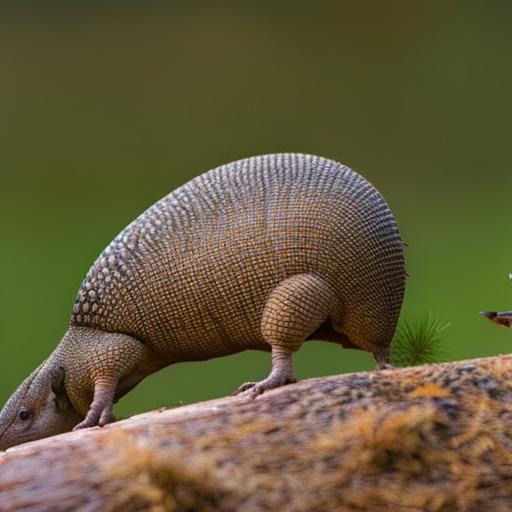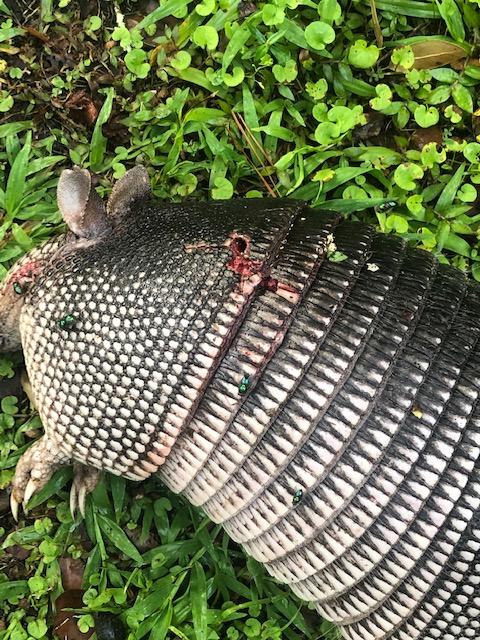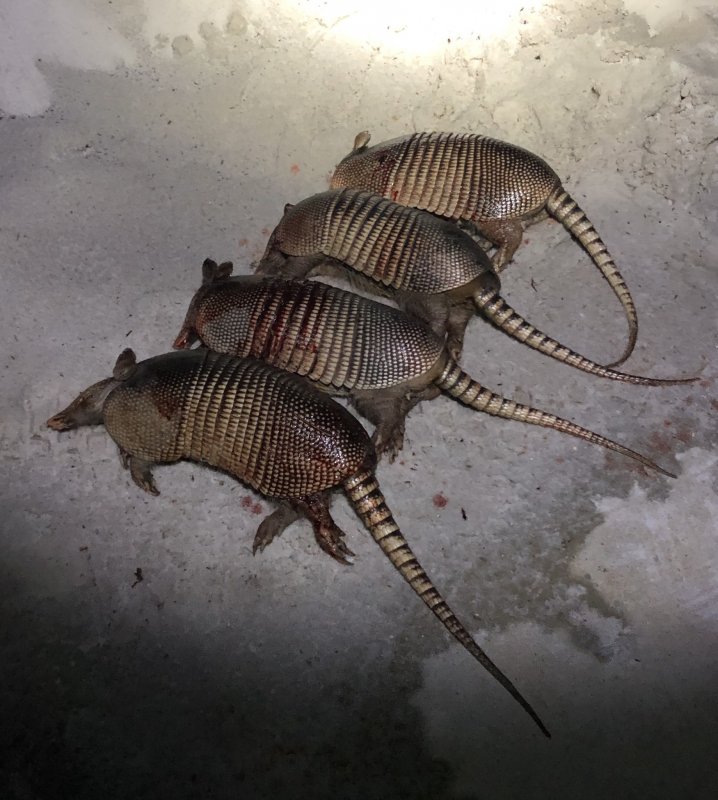Your cart is currently empty!

Ultimate Guide Series: How to Hunt Armadillos

Table of Contents
Introduction
Hey there, fellow hunters! Ever considered adding a unique twist to your hunting expeditions? Let me introduce you to the world of armadillo hunting. Now, if you’re scratching your head, thinking, “Why would I hunt an armadillo?”, let me enlighten you. These fascinating creatures, with their armored shells and nocturnal habits, make for an engaging and challenging hunt. The focus of this guide is to walk you through the intricacies of how to hunt armadillos efficiently and ethically. Whether you’re a seasoned hunter looking for a new challenge or a beginner searching for a fresh adventure, understanding how to hunt armadillos can add another feather to your hunting cap. The world of armadillo hunting awaits you, and I’m here to be your trusty guide.
Understanding Armadillos: Anatomy and Behavior
Physical Characteristics: Size, Weight, and Appearance
First off, let’s dive into what makes armadillos such fascinating creatures. Weighing between 8 to 17 pounds on average (though some species can be much lighter or heavier), armadillos boast a unique appearance that sets them apart from other game. Their most defining characteristic? That leathery, bony armor, which acts as a protective shell. This carapace covers their back, sides, head, and even the tail in most species. They’ve got short legs but don’t let that fool you. These critters can move when they want to! Their size can vary, but most armadillos you’ll come across in North America, especially the Nine-banded ones, are roughly the size of a large housecat.
Habitual Behavior: Digging, Nocturnal Activities, Etc.
Now, if you’re wondering about their day-to-day activities, armadillos are natural diggers. Using their sharp claws, they dig burrows and tunnels for shelter and to search for food. And guess what their favorite snacks are? Insects! Grubs, beetles, and ants are all on the menu. If you come across a series of small holes in the ground while you’re out and about, there’s a good chance an armadillo’s been dining there. One more thing: these creatures are primarily nocturnal. So, if you’re planning on hunting them, twilight or nighttime would be your best bet. Just remember to pack a reliable flashlight or headlamp!
The Role of Armadillos in the Ecosystem
Now, you might be thinking, “Okay, they’re cool and all, but why should we care about armadillos?” Beyond the hunt, it’s essential to appreciate their role in our ecosystem. As insectivores, they help control pest populations, making them an ally for gardeners and farmers. Plus, the burrows they dig? They don’t just use them for themselves. Other wildlife, including snakes, rodents, and even small birds, often take advantage of these underground homes. So, in a way, armadillos are like the little architects of the animal kingdom, creating habitats for their fellow critters.
Legalities and Ethics of Hunting Armadillos
Knowing the Hunting Seasons and Regulations in Various Regions
Alright, before you even think of loading up that hunting gear and heading out, there’s some groundwork to be laid. Let’s talk about the legal side of things. Just like hunting larger game, hunting armadillos is subject to certain regulations, and these vary depending on where you are. Some states or regions may have specific seasons, while others may allow hunting year-round. And remember, armadillos aren’t native everywhere, so introducing or hunting them in non-native areas might be a big no-no. Always, and I mean ALWAYS, familiarize yourself with local regulations.

The Importance of Hunting Responsibly and Ethically
Now, onto a topic close to my heart: ethics. Being an experienced small game hunter, I’ve come to realize that the thrill of the hunt should always be balanced with respect for the animal and nature. Armadillos, with their quirky appearance and fascinating behaviors, deserve this respect. Hunting them for mere sport and wasting the meat or other resources isn’t just wasteful; it’s downright disrespectful. Plus, remember those burrows and their ecosystem roles? Overhunting could have a more extensive ecological impact than you might imagine. Always aim to hunt sustainably. Know your limits, and stick to them.
Permits, Licenses, and Other Necessary Documentation
Last, but definitely not least, let’s chat about the paperwork. I know, I know—it’s not the most exciting part of the hunt. But trust me, it’s essential. Depending on your location, you might need a specific permit or license to hunt armadillos. These can often be acquired from local wildlife agencies or departments. Don’t just assume because you have a general hunting license that armadillos are on the table (figuratively and literally). It’s better to spend a bit of time ensuring you’re on the right side of the law than facing penalties or fines later on. And hey, while you’re at it, keep an eye out for any workshops or courses offered by these agencies. They’re great places to pick up tips, meet fellow hunters, and deepen your understanding of the species.
Essential Gear and Equipment
Firearms vs. Traps: Choosing the Right Tool for the Job
Jumping into the world of armadillo hunting, one of the first decisions you’ll need to grapple with is your method of capture. While firearms are a choice for some, I’d argue that for a creature as small and non-aggressive as the armadillo, traps are the way to go. Live traps, especially those of the cage variety, can be an effective and humane method. When using them, make sure they’re the right size for an armadillo and that you’re checking them frequently to prevent unnecessary stress to the animal. If you do opt for firearms, ensure you’re using appropriate ammunition and always aim for a quick and humane kill. Remember, it’s all about respect.
Protective Wear and Camouflage: Blending in with the Environment
Let’s talk attire. No, I’m not turning this into a fashion show, but what you wear out there does matter. Armadillos have a keen sense of smell and hearing, so blending in is crucial. Choose camouflaged clothing suitable for the terrain you’re hunting in, whether that’s woodland, grassland, or elsewhere. And here’s a tip from a seasoned small game hunter: go for soft, quiet fabrics. No rustling and giving away your position!
In terms of protective wear, remember that you’re potentially handling a wild animal. Gloves are a good idea, both for setting traps and handling armadillos. Their claws are sharp and designed for digging, so a little protection goes a long way. Additionally, if you’re out at night (remember, they’re nocturnal!), bug spray might become your new best friend.
Auxiliary Equipment: Torches, Bags, and Tracking Tools
The devil’s in the details, or in this case, the success of the hunt often lies in the auxiliary gear you pack. A good torch or headlamp is essential, especially if you’re stalking or checking traps in the dark. Go for something with a strong beam and, ideally, an adjustable focus.
In terms of bags, bring something sturdy to carry any captured armadillos. Think breathable materials, especially if you’re going for a live catch and release approach. As for tracking tools, consider investing in a small trail camera if armadillo hunting becomes a regular hobby. These cameras can give you insights into their routines, preferred paths, and feeding spots.
Locating and Tracking Armadillos
Identifying Signs: Burrows, Tracks, and Droppings
When it comes to armadillos, it’s not always about spotting the critter itself—sometimes it’s about the telltale signs they leave behind. One of the most common indicators of an armadillo’s presence is their burrows. Look out for holes in the ground that are about 7-8 inches wide with a heap of soil right outside; it’s like the armadillo’s version of a welcome mat. These burrows can be up to 15 feet long, so you know they’ve spent some quality time there.
Their tracks are another giveaway. Armadillos have unique footprints, with their front feet showing four claw marks in a semi-circular pattern, and their hind feet leaving a more elongated mark. It’s like they’re always giving you a tiny high four!
And yes, we have to talk about droppings. They’re often found near their burrows or feeding sites and can resemble those of small dogs. But remember, it’s what’s inside that counts! Their droppings might have fragments of insects, making them a bit gritty in texture.
Best Times to Hunt: Night vs. Day
Now, let’s talk timing. Armadillos are mostly nocturnal creatures, making nighttime your prime hunting window. That’s not to say you can’t spot them during the day—especially in cooler weather or after a rain shower when they might come out to forage. But for the most part, sharpen those night-vision skills (or at least grab a reliable torch) and prepare to be a creature of the night alongside your quarry.
Utilizing Nature and Technology for Successful Tracking
Being an effective armadillo tracker means harnessing both the ancient arts of tracking and the modern marvels of technology. On the nature front, tune into the environment. Soft, damp grounds—like after a rainstorm—can make for perfect tracking terrain since it’ll capture those aforementioned tracks beautifully.
But don’t be afraid to get techy with it. Trail cameras, as mentioned earlier, can be a godsend. Place them near suspected burrows or frequent armadillo pathways. These nifty devices can give you a glimpse into the armadillo’s world, helping you understand their patterns and prime hunting times.
And here’s a small tip: some hunters swear by using a simple UV light. Why? Because armadillo urine fluoresces under UV light! Just another quirky fact about these armored wonders.
Effective Techniques for a Successful Hunt
Approaching Silently and Cautiously
Alright, folks, let’s get into the nitty-gritty of the actual hunt. Imagine you’ve found the signs, you’re equipped, and you’ve got an armadillo in your sights. Now what? The approach. These creatures have sharp hearing and a keen sense of smell, even if their eyesight is somewhat lackluster. So, tip number one: silence is golden. Tread lightly and avoid stepping on twigs or rustling leaves. And if you’ve got those noisy pants or jackets? Leave ’em at home. You want to be as inconspicuous as a gentle breeze.
The Importance of Patience and Timing
Now, onto the virtue every seasoned hunter knows all too well: patience. Armadillos might be small, but hunting them isn’t always a quick game. You might have to wait out their foraging, observe their patterns, and yes, sometimes even endure them giving you the slip. Remember, it’s a dance—sometimes slow, sometimes fast-paced, but always requiring rhythm and timing. The best moments to make your move? When they’re engrossed in digging for insects or when they’ve paused to sense their surroundings. Their natural curiosity can sometimes make them stop and sniff the air; use these moments wisely.
Strategic Positioning Based on the Behavior of the Armadillo
Alright, we’ve approached, we’ve waited, now where do we position ourselves? Understanding armadillo behavior is your key here. Armadillos have a tendency to jump straight up in the air when startled—a quirky little defense mechanism. So, if you’re too close, you might get an unexpected face-to-face encounter with a flying armadillo!
Position yourself downwind, so your scent doesn’t give you away. Remember, their noses are a lot better than their eyes. If you’re near their burrow, a good strategy is to position yourself at a vantage point where you can see both the entrance and the general foraging area. This gives you a clear line of sight, whether they’re coming or going.
Lastly, be aware of their paths. Armadillos often use the same routes when foraging, so if you notice a regular trail or pattern, use it to your advantage. Set up along that route, and you’re likely to have a front-row seat to the armadillo’s daily routines.

Processing and Utilization
Cleaning and Skinning: Preparing the Armadillo Post-Hunt
First things first, after a successful hunt, it’s important to treat your catch with respect and ensure none of it goes to waste. Cleaning and skinning an armadillo is quite the unique process given their armored exterior. Start by laying the armadillo on its back and making a longitudinal incision from the lower abdomen to its neck. Carefully work your knife around the legs, detaching the skin from the muscle. The aim is to separate the inner meat from the shell, which might take some practice if you’re new to it. Always ensure you’re using sharp knives and wearing gloves – armadillos can sometimes be carriers of diseases.
Cooking and Culinary Applications: Popular Recipes and Preparation Methods
Believe it or not, armadillos have found their way into the culinary scene in some cultures. Once cleaned and skinned, the meat can be treated similarly to pork. Slow-cooked armadillo with some traditional herbs and spices can be mouth-wateringly tender. Some folks even make armadillo chili or stew! If you’re venturing into cooking it for the first time, a good rule of thumb is to cook it thoroughly to avoid any potential health risks.
For a basic recipe: After skinning and cleaning, cut the meat into chunks, season with salt, pepper, garlic, and your choice of herbs, then brown it in a pot with some oil. Once browned, add broth or water, some veggies like carrots, onions, and celery, and let it simmer until the meat is tender. Serve it up with some cornbread on the side, and you’ve got yourself a hearty armadillo stew!
Other Uses: Crafts, Hide, and More
Apart from its culinary applications, the armadillo has other offerings. Their shells, once cleaned and dried, have been used in various crafts, from wall hangings to ornaments. Some artisans even use them as natural bowls or containers. If you’re into leatherwork, armadillo hide (especially from the softer underbelly) can be fashioned into various items, from pouches to small trinkets.
Before venturing into any crafting, though, it’s crucial to ensure the shell or hide is properly cleaned, treated, and if possible, sealed to avoid any lingering odors or potential health concerns. It’s also a testament to sustainable hunting, where every part of the animal is utilized, respecting its life and the environment.
Related Questions
Are armadillos safe to eat?
Absolutely! Armadillos can be a culinary delight if prepared correctly. However, a word of caution: some armadillos, particularly in the southern U.S., have been known to carry the bacteria that causes leprosy. Always wear gloves when handling them and ensure the meat is cooked thoroughly. When properly cooked, the risk of disease is minimized. Think of them a bit like wild pork, but always prioritize safety and cleanliness in the preparation process.
How can I prevent armadillos from damaging my property?
Ah, the age-old battle between gardeners and these digging aficionados! Armadillos love to burrow and look for insects in soft soil, which can sometimes wreak havoc on gardens and lawns. One effective method is to install a sturdy mesh fence that goes a foot deep into the ground around your property or garden beds. Motion-activated lights or sprinklers can also deter these nocturnal creatures. And remember, remove potential food sources by keeping your garden insect-free, and they’ll likely move on to more bountiful digging grounds.
What predators do armadillos have in the wild?
Armadillos, despite their armored appearance, do have their share of foes. Common predators include coyotes, bobcats, cougars, and even large birds of prey when they’re still young or babies. The armadillo’s primary defense — that tough armor — is quite effective against many threats, but it’s not foolproof. And that odd jump they do when startled? It’s meant to surprise predators, but unfortunately, it often leads them straight into the path of vehicles on roads. Always a good reminder to drive cautiously in armadillo territory!
Summary
We’ve covered a lot of ground here, from understanding the very nature of the armadillo to diving deep into the techniques on how to hunt armadillos. It’s more than just a chase; it’s about respecting the species, understanding their behavior, and ensuring ethical hunting practices. I hope this guide has provided you with a new perspective and essential knowledge on how to hunt armadillos. Remember, every hunt offers a chance to learn, adapt, and grow. So, the next time you’re out there, let the thrill of the hunt combine with the respect for the animal, and may your adventures always lead you to new horizons. Safe hunting, everyone!

Herb has been a longtime lover of the outdoors. Whether it be hunting, camping, fishing or just getting outside to reset. Proud father and animal lover. Bourbon anyone?

by
Tags:
Comments

Categories
- Big Game Hunting (301)
- Deer (202)
- Reviews (3)
- Shooting (16)
- Slingshot (1)
- Small Game Hunting (42)
- Upland Hunting (126)
- Waterfowl Hunting (3)





Leave a Reply